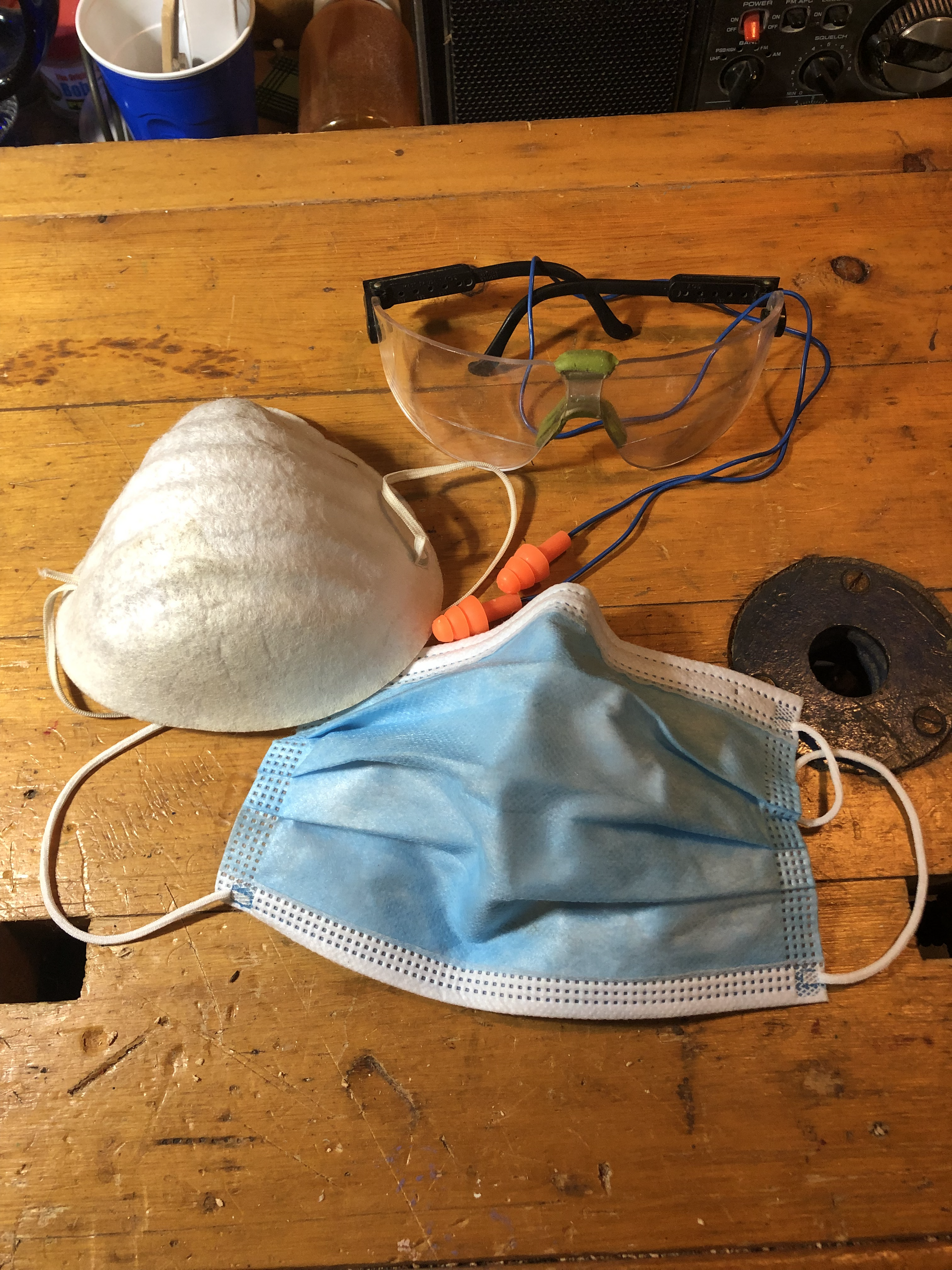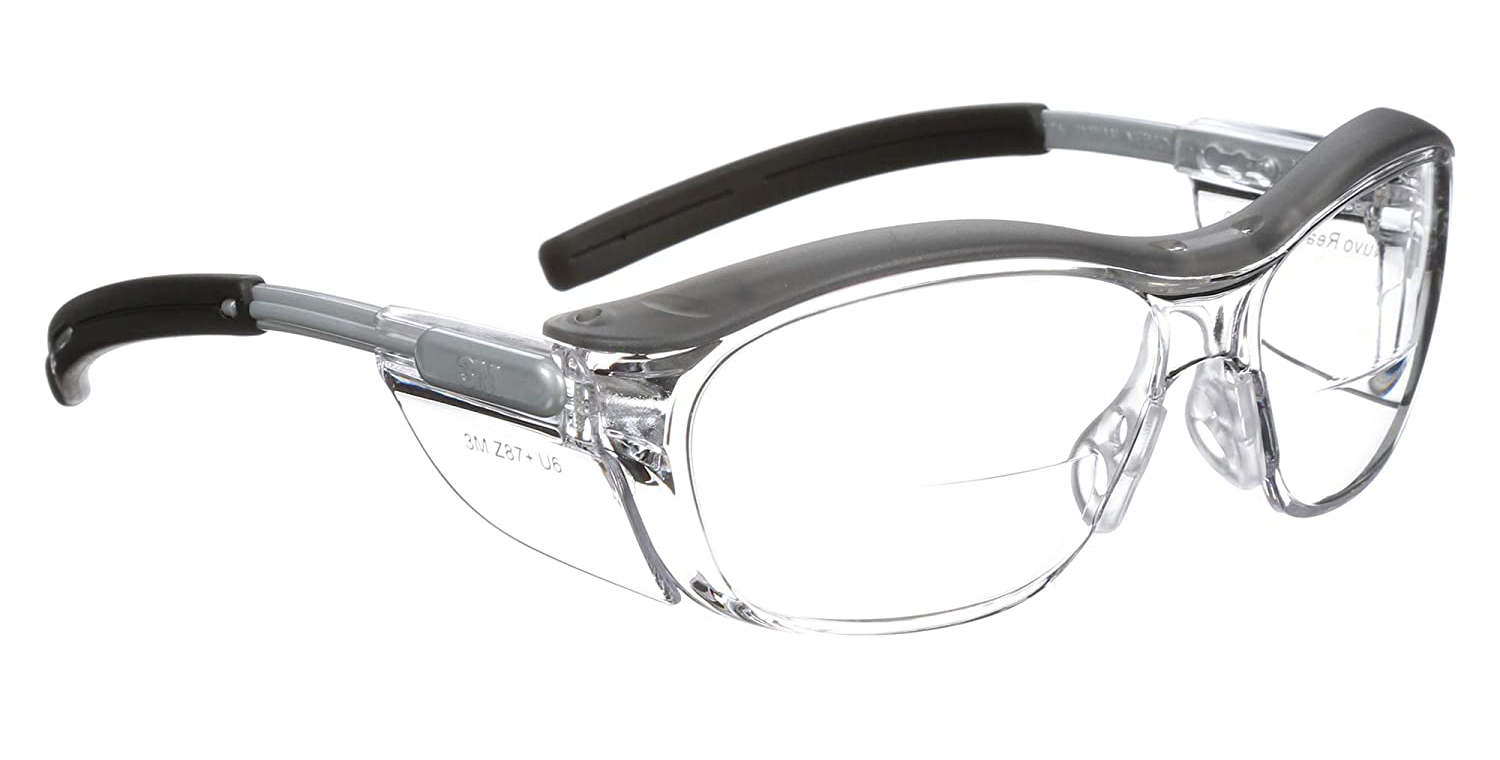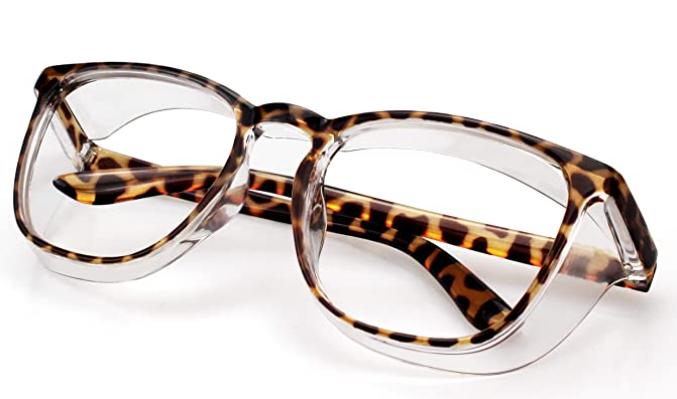Sight, hearing and respiration protection
Always use the proper personal protective equipment (PPE) when you are involved in a DIY project. This article goes over some of the options you can select from to stay safe.

Never shortchange yourself
When it comes to safety, you must never shortchange yourself by not taking the proper safety measures. Never ever; not once! Fortunately, it is a simple matter to protect your eyes, ears and lungs while working on your projects. The products for these purposes are all classified as personal protective equipment or PPE. It's a term you likely have heard in reference to front-line workers during the pandemic.
Will you need to use every protective measure on every project? No, you won't. Here's a simple set of guidelines as to when you should use what protective equipment.
Hand tools | |||||
|---|---|---|---|---|---|
Protective gear | Drill | Hammer | Screwdriver | Saw | Sandpaper |
Safety glasses | x | x | x | x | x |
Ear protection | |||||
Face mask | x |
Power tools | |||||||
|---|---|---|---|---|---|---|---|
Protective gear | Table or Skil saw | Router | Power sander | Lathe | Lawnmower | Leaf blower | Weed Eater |
Safety glasses | x | x | x | x | x | x | x |
Ear protection | x | x | x | x | x | x | x |
Face mask | x | x | x | x | x | x | x |
Notice any trends in these tables of protective equipment use? I knew you did. Eye protection is a must for any activity. For power tools, all three are necessary.
Eye protection
As you've seen, eye protection is needed in every situation. A question I've asked and heard asked about eye protection is this, "Don't my glasses provide enough protection?" The short answer is maybe.
When working with hand tools and a cordless drill, I personally wear my glasses rather than dredging out my safety glasses. Folks have indicated that is okay. Why? Because you are not throwing up a lot of dust and debris using hand tools or an ordinary cordless drill. And, for those of us who are farsighted (longsighted for our British friends), wearing glasses is necessary to see what we are doing.
However, when it comes to power tools other than the drill mentioned, eye protection is mandatory. These tools are all rotational. In the course of performing their tasks, they spit out dust, chips and shavings at fairly high speeds. If they make contact with your eyes, they can cause irritation and damage. Put on your safety glasses!
Choices abound
Any shop or lab glasses will provide protection when using common power tools like those listed. If you have a pair from a science class, those will fill the bill. Otherwise, you have a lot to choose from, many of which are quite stylish. Okay, that's probably a stretch, but you won't look like a total geek wearing something like "The Dominator" by Dewalt.
Note: Sometimes, I link to a product on Amazon where, if you buy it, I get a small fee. Eventually, I hope to retire to a tropical island and let the fees roll in!!!!!
You don't have to go the way of the Dewalt glasses; clear versions are the most common. But, it is fun to look at the options.
Reader safety glasses
So, what if you wear glasses? It used to be that you had to buy some really funky-looking, gigantic safety glasses that you wore over your regular spectacles. It appears the proper terminology for these is, "over the glass" or "OTG." Here's an example on Amazon from Gateway Safety. Trust me; these are a lot nicer than some I've seen.
You can also purchase reader versions. Yes, that's right, safety glasses come in magnified versions, so you can use them instead of your good glasses. The safety glasses shown in the opening picture are my readers. You'll likely be admiring the bug-gut-green nose and forehead pieces. Those are Sugru! I replaced the originals when they broke. Here is a pair from 3M, with Scotchgard, thank you!

And another pair from Carhartt.

Anti-fogging
An annoying aspect of wearing safety glasses with a face mask is the fogging that obscures your vision. Seems to go against the whole concept of "safety," doesn't it? Many safety glasses are advertised as anti-fogging. I've never had a pair of those, but maybe your results will be better.
Tip: Here is my workaround regarding the fogging. I put on my mask and then the safety glasses. The trick is to rest the glasses on top of the mask, slightly down on your nose.
Side shields
Some safety glasses come with side shields. These are pieces that start at the hinge and run back to your temples. In some cases, they are part of the frame; in others, you can add and remove them as needed. These are worth considering whenever you are working with a power tool that really makes the chips fly like a chain saw or a lather. Peruse these from LeonDesign.

Hearing protection
"Eh, what did you say?" Skimp on or ignore hearing protection, and this question may be in your future. Unfortunately, it is part of mine because I didn't always wear hearing protection. Then again, back in the day, we were not made aware of the risks like today. So, you need to take care of your hearing by using the proper protection.
When should I wear hearing protection?
Before getting into the weeds about types of hearing protection, let's answer a simple question, "Do I need to wear them all the time I am working?" Well, as usual, the answer is it depends on what you are doing.
If you are cutting wood with a chain saw, turning a spindle on the lathe or cutting lots of lumber to size, you should leave them in place.
If you are making a cut on a table saw them doing some handwork, you can take them out until you return to the noisy tool.
I'll just wear my earbuds or headphones!
Uh, no. Don't make the mistake of thinking that your earbuds or other-the-ear headphones will protect your hearing. Here's why:
- They are not designed with this purpose in mind unless they are noise blocking. Then they may work.
- But why would you use your expensive gear in a dirty, dusty and sweating environment?
- The tendency is to turn the volume up so you can hear it over the power tool. Guess what? That does as much damage as not using any protective gear at all.
In-ear or over -- what should you choose?
My personal preference is a set of disposable, in-ear foam plugs with a vinyl string connecting them. I show a pair in the opening picture. These offer the following benefits:
- They are cheap.
- They are easy to use.
- They hang around your shoulders when not in your ears.
- They do a great job.
- No tears are shed if they are damaged somehow.
You can also buy individual foam earplugs. They are not as convenient in my opinion because you need to put them somewhere when you take them out.
However, their low price can make up for a lack of convenience and other features.
Check out my favorite woodworking supply store, Woodcraft
In a happy coincidence, the Christmas Woodcraft catalog arrived yesterday evening. And, what to my wondering eyes did appear but a two-page spread on hearing and respiration protection products! My apologies for those readers anticipating an eight tiny reindeer reference.
Note: I do not have an affiliate account with Woodcraft; I simply love their stores and products!
In the hearing protection department, they feature two products, in-ear, connected earplugs and over-the-ear headphones with Bluetooth connectivity so you can listen to tunes and not just whistle while you work. Oh, and you can take calls too.
The earplugs are more than just foam. They have some fancy technology to allow the wearer to hear speech while blocking out the harmless tool noise. Check 'em out here. They are $14 per pair, but if they work as described, they are worth the extra dough.

Here is the link to the over-the-ear Bluetooth product. It addresses the issue of turning the volume up too high to hear over the tool noise by limiting it to 85 dB.

Respiratory protection
As a person with some nasty seasonal allergies, I have worn a face mask while working in the shop or the yard mowing and trimming for years. With oversized tinted safety glasses, the mask and a pith helmet, I cut a superb figure. Ha, I likely earned some puzzled stares from bypassers.
Today, amid the Covid furor, wearing a face mask isn't at all unusual. Say, does that make me a trendsetter? Probably not. Anyway, the point of this section is that when you are making sawdust or raising dust, you should always wear a mask to protect those breathing apparatus called lungs.
Note: If you have a beard, that can reduce the effectiveness of any respiratory PPE. Just keep that in mind, especially when working with products that emit fumes or volatile organic compounds (VOC).
Choices galore
Your choice in respiration protection products is also vast. You can go with the simple pleated versions (disposable), the formed type that fits snugly around your nose and mouth (disposable), a more permanent formed style with replaceable filters and full-blown respirators. These last two can also serve double duty in cosplay situations, should that capture your fancy.
Heading back to Woodcraft, they have one of the jazzier dust masks, the RZ. Its features include moisture-wicking, breathable fabric for comfort in warm temperatures, replaceable charcoal filers and one-way valves to keep fogging of safety glasses at bay. This is the type of protection you want if you are working with something that emits a lot of noxious fumes.
You can add this bad boy to your personal protective equipment (PPE) collection in red, black or light grey. Match them to your shop ensemble for a touch of style!

Respirators versus the face mask
Before moving on, I want to talk briefly about the difference between a respirator and a face mask. The face mask is suitable for general purposes where you are dealing with dust and sawdust. A respirator is a much beefier piece of PPE. You can use the respirator anywhere you would typically use a face mask. However, that might be overkill, especially if you never work with resins, finishes and other products that emit fumes.
Key features include replaceable dust and odor filters and a much tighter fit over your nose and mouth. They'll also have additional labeling to indicate compliance with various safety standards. Finally, they do not make your safety glasses fog up! This may be my favorite feature because the fogging issue is a nuisance.
I have one I use when setting off smoke bombs to eradicate the mice colony that moved over from the neighbors when they tore down and rebuilt the house there. Thanks, neighbor:>)
Note: A side effect of the respirator I have discovered is how it helps with my seasonal allergies. I wear it when mowing, but if I am having an especially bad allergy attack, wearing it in the house for 20-30 minutes seems to stop the sneezing and itchy eyes. Nothing I have seen in any product literature includes this benefit, so take it with a grain of pollen and realize your results may vary.
Integrated options
Let's wrap up this PPE discussion with a quick review of integrated options. These products incorporate two or more protective devices for sight, hearing and respiration protection.
Sight and respiration protection
A common combination for DIY users is the integration of safety glasses and a respirator. As already mentioned, respirators do not cause safety glasses to fog up. Having a combined unit is very convenient, IMHO and might be in my shop in the future. If you wear glasses, make sure what you buy will fit over your lenses.
Since I've referenced Woodcraft products a fair bit, I'll stick with them for an example of a combined vision and breathing device. Their Eclipse Integra p100 is a perfect illustration of this integration. Check it out below.


If this reminds you of part of the kit worn by actors in apocalyptic zombie infestation movies, you are right on point. So, this might be just the ticket for both DIY and bug-out use!
Hearing and sight protection
The typical application for this combination is protection while using chainsaws and wood chippers. However, they serve nicely in the shop and around the yard. Most of these helmets have a mesh face shield as the particles generated are pretty large and are easily deflected by mesh. Check out this example by Husqvarna.

Pretty awesome, right? The drawback is when creating fine dust like sanding, the mesh doesn't provide enough eye protection. That's where the Kask product shown below comes into the mix. It offers a solid face shield.

Say, didn't Luke Skywalker wear one of these in Star Wars? It is available in four different colors; grey, orange, red and white.
EENR protection?
In researching this article, I did not find a product that combines eye, ear, nose and respiratory protection. Perhaps it is an unserved market segment, awaiting some entrepreneur bringing just such a product to the masses. We'll see.
Closing comments
DIY is a lot of fun and very rewarding. I love to work on stuff in and around the homestead. Be sure to take all safety measures provided with tools and products you use to complete your projects. And always use the right PPE to keep your sight, hearing and breathing in tip-top shape.
